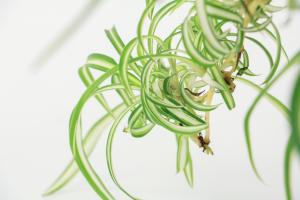How to Plant a Magnolia Tree in Florida
Magnolia trees are a beautiful addition to any garden or landscape. With their large, fragrant flowers and glossy green leaves, they are a popular choice for many homeowners in Florida. If you are interested in planting a magnolia tree in your yard, there are a few things you need to know.
Choose the Right Variety
The first thing you need to do when planting a magnolia tree in Florida is to choose the right variety. There are several different types of magnolia trees to choose from, each with its own unique characteristics. Some varieties, such as the Southern magnolia or the sweetbay magnolia, are well-suited to the Florida climate.
When choosing a magnolia tree, look for a healthy specimen with full, green leaves and a sturdy trunk. Avoid trees with brown or wilted leaves, as this can be a sign of disease or stress. If possible, choose a tree that is already blooming, as this will give you a good idea of what to expect in terms of flower size and color.
Site Selection
Once you have chosen your magnolia tree, the next step is to select a suitable planting site. Magnolia trees prefer well-drained soil and full sun to partial shade. In Florida, it is important to choose a location that is protected from strong winds, as this can damage the delicate flowers and leaves of the tree.
When planting a magnolia tree, it is also important to consider its eventual size. Southern magnolias, for example, can grow up to 80 feet tall and 40 feet wide. Make sure you choose a location that can accommodate the tree's size and leave plenty of room for it to grow.
Planting the Tree
The best time to plant a magnolia tree in Florida is in the fall or winter, when the weather is cooler and the tree is dormant. To plant the tree, dig a hole that is twice as wide as the root ball and just as deep. Gently remove the tree from its container and place it in the hole, making sure that the top of the root ball is level with the surrounding soil.
Backfill the hole with soil and pack it firmly around the base of the tree. Water the tree deeply to encourage root growth and help it settle into its new home. Add a layer of mulch around the base of the tree to help retain moisture and prevent weeds.
Caring for Your Magnolia Tree
Once your magnolia tree is planted, it is important to care for it properly to ensure its health and longevity. Magnolia trees prefer moist soil, so make sure to water it regularly, especially during hot, dry weather. Fertilize the tree with a slow-release fertilizer in the spring, and prune it in the late winter or early spring to shape it and remove any dead or damaged branches.
Finally, keep an eye out for any signs of disease or insect infestation. Magnolia trees are susceptible to a number of pests and diseases, including scale, spider mites, and fungal infections. If you notice any unusual symptoms, such as yellowing leaves, black spots, or webbing on the leaves or branches, consult a professional arborist or horticulturist for advice on how to treat the problem.
In Conclusion
Planting a magnolia tree in Florida can be a beautiful and rewarding experience. By choosing the right variety, selecting a suitable planting site, and caring for the tree properly, you can enjoy its beautiful flowers and foliage for many years to come.

 how many times do yo...
how many times do yo... how many planted tre...
how many planted tre... how many pine trees ...
how many pine trees ... how many pecan trees...
how many pecan trees... how many plants comp...
how many plants comp... how many plants can ...
how many plants can ... how many plants and ...
how many plants and ... how many pepper plan...
how many pepper plan...































